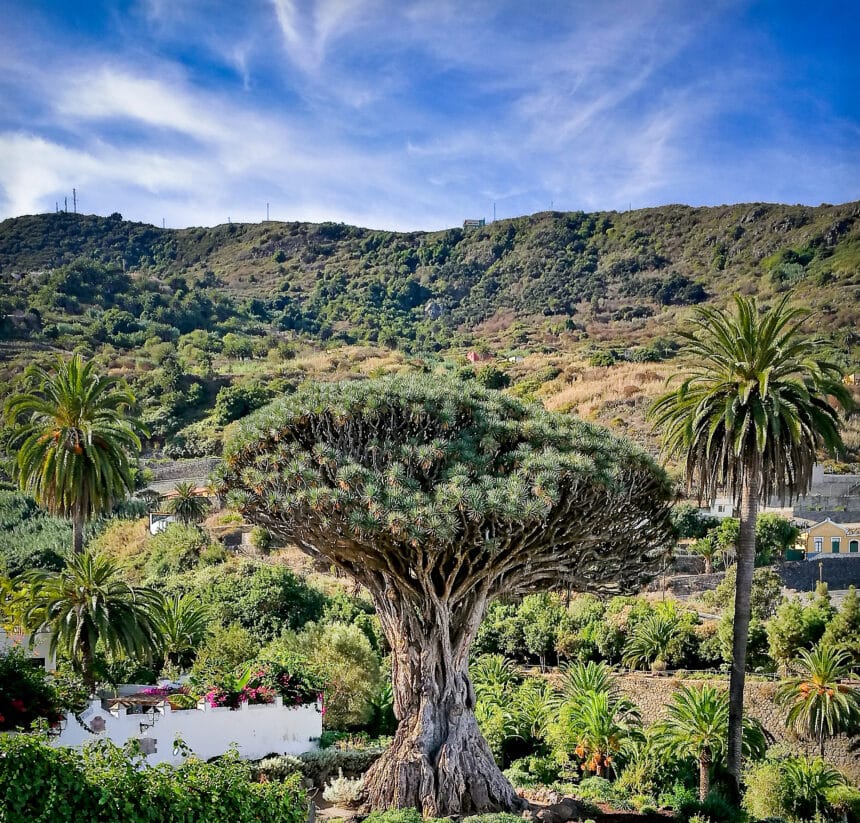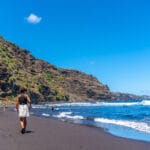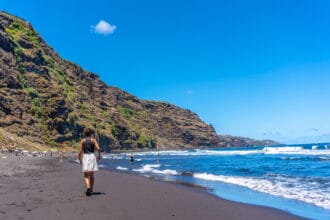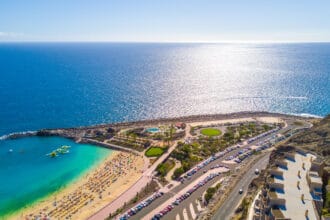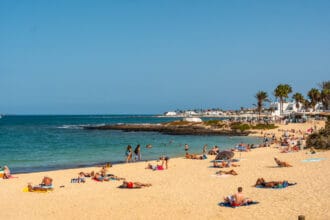I’ll admit, the first time someone mentioned dragons’ blood trees to me, I thought they were having me on. It sounds like something from a fantasy novel, doesn’t it? But these peculiar umbrella-shaped trees actually exist, and they’re just one of the many surprises waiting in the Canary Islands.
Most people think they know the Canaries. Package holidays, all-inclusive resorts, chips with everything. I certainly did. But spend any real time exploring these seven Spanish islands and you’ll quickly realise there’s far more going on than the tourist brochures suggest.
The dragons’ blood trees are found on the smaller islands, particularly La Palma and La Gomera. They look absolutely bizarre – like giant umbrellas that someone’s turned inside out and stuck on top of thick trunks. The locals have been harvesting the red resin from these trees for centuries, using it for everything from medicine to dye. Whether it actually works for anything, I couldn’t say, but there’s something quite magical about seeing these ancient trees clinging to clifftops.
But let’s be honest, most visitors come for the beaches. And the Canaries deliver, though perhaps not in the way you’d expect. Forget your typical Mediterranean golden sand – well, actually, you’ll find that too, but the real showstoppers are the black volcanic beaches.
Tenerife’s Playa Jardín is probably the most famous. The sand is dark, almost charcoal-coloured, created by centuries of volcanic activity. It sounds odd, and I suppose it is, but there’s something quite dramatic about lounging on this dark coastline with palm trees swaying overhead. The contrast is striking, particularly when the sun catches the black sand just right.
Then you have Fuerteventura, which offers the complete opposite. Miles and miles of proper golden beaches that stretch as far as you can see. The sand dunes at Corralejo are particularly impressive – like someone transported a piece of the Sahara and plonked it next to the Atlantic. Which, geographically speaking, isn’t that far from the truth.
What strikes me most about the Canaries is how different each island feels. Gran Canaria has this incredible diversity packed into a relatively small space. You can start the day on a beach in the south, drive through dramatic ravines and pine forests in the interior, and end up in the bustling capital of Las Palmas by evening. It’s almost like someone took bits of different countries and stuck them together.
Lanzarote takes the volcanic theme to extremes. The entire island feels like an art installation created by nature and enhanced by César Manrique, the local artist who turned the island’s harsh landscape into something beautiful rather than trying to hide it. The Jameos del Agua caves are extraordinary – underground lakes with blind albino crabs that exist nowhere else on earth. I’m not sure why that detail stuck with me, but it did.
La Palma calls itself ‘La Isla Bonita’ and it’s not wrong. This is perhaps the greenest of the islands, with laurel forests that feel ancient and mysterious. The hiking here is excellent, though I’d recommend proper walking boots. The Caldera de Taburiente is this massive crater you can walk into, assuming you’re reasonably fit and don’t mind steep paths.
The recent volcanic activity on La Palma has been fascinating from a geological perspective, though obviously devastating for locals. It’s created new land, which is remarkable when you think about it. The islands are still growing, still changing. There’s something quite humbling about witnessing geological processes that usually take place over thousands of years happening in real time.
El Hierro is the smallest and perhaps the most peaceful. It feels almost forgotten, which is probably part of its charm. The diving here is supposed to be world-class, with incredibly clear waters and diverse marine life. I can’t verify that personally, but the coastline certainly looks promising.
La Gomera has this ancient whistling language called Silbo Gomero that locals still use to communicate across valleys. It sounds made up, but it’s actually UNESCO protected. I heard it once during a visit and couldn’t make head or tail of it, obviously, but there’s something quite moving about hearing this ancient form of communication still being used.
The weather across all the islands is reliably pleasant year-round. Not blazing hot, but warm enough that you can sit outside in January wearing just a light jumper. Perfect for escaping British winters without dealing with jet lag or long-haul flights.
What I didn’t expect was how good the food would be. Lots of fresh fish, interesting local cheeses, and those wrinkly potatoes with green mojo sauce that appear on every menu. The wine is surprisingly decent too, particularly from Lanzarote where they grow grapes in volcanic ash. It sounds like it shouldn’t work, but somehow it does.
I suppose if I’m being critical, some areas do feel quite developed. Parts of Tenerife and Gran Canaria can be overwhelming if you’re looking for peace and quiet. But then again, that infrastructure means everything works smoothly, which has its advantages when you’re on holiday.
Perhaps what I appreciate most about the Canaries is that you can have completely different experiences depending on which island you choose, or even which part of an island you visit. Beach lounging, serious hiking, cultural exploration, otherworldly landscapes – it’s all there within a few hours’ flight from the UK.
The dragons’ blood trees might be the most unusual residents, but they’re just one part of what makes these islands so unexpectedly diverse. Sometimes the most interesting destinations are hiding in plain sight, masquerading as somewhere ordinary.


